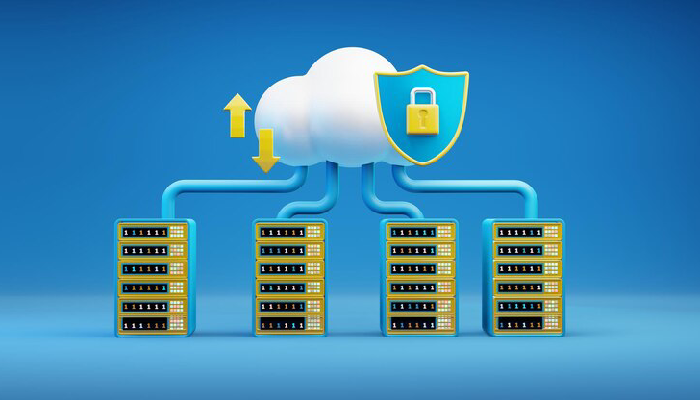
Top Reasons to Use AWS Web Application Firewall for Enhanced Web Security in 2025
AWS Web Application Firewall offers solid protection against a wide range of web threats, including common vulnerabilities like SQL injection and complex Layer 7 attacks. Its managed rules and bot control reduce the need for constant manual updates while minimizing false positives, which makes managing security easier. The real-time monitoring and detailed visibility help teams quickly respond to incidents, tuning defenses based on current traffic patterns. Because it integrates smoothly with other AWS services and supports automation through APIs, organizations can enforce consistent security policies without extra hassle. Additionally, its scalable design adapts well to modern architectures like serverless or microservices, making it a practical choice for many businesses in 2025.
Comprehensive Defense Against Common and Advanced Threats
AWS Web Application Firewall provides a strong shield against a wide range of web threats, including the OWASP Top 10 vulnerabilities like SQL injection and cross-site scripting. It effectively blocks injection flaws that are often exploited to steal data or damage applications. Beyond these common risks, AWS WAF also mitigates Layer 7 HTTP(S) attacks such as bot attacks, account takeover attempts, and API exploits, which are increasingly frequent and sophisticated. When paired with AWS Shield Advanced, it offers robust protection against Distributed Denial of Service (DDoS) attacks, helping maintain application availability during large-scale traffic floods. AWS WAF uses managed rule groups curated by AWS and trusted third parties to ensure protection stays up to date with the latest threat landscape. Users can also create custom rules tailored to specific application behaviors and emerging threats, allowing flexibility in defense strategies. Its ability to inspect HTTP requests at multiple levels—headers, query strings, and JSON bodies—means it can filter out malicious payloads before they ever reach backend systems. This inspection capability helps reduce exposure to both automated attacks and targeted manual threats. Suspicious IP addresses and traffic patterns can be blocked or monitored, enabling fine-grained control to stop attackers early. The integration of threat intelligence allows AWS WAF to adjust security policies proactively, keeping defenses aligned with evolving risks. Altogether, these features combine to provide a comprehensive, adaptable, and effective defense that fits the needs of modern web applications.
- Protects against OWASP Top 10 vulnerabilities like SQL injection, cross-site scripting, and other injection flaws.
- Mitigates Layer 7 HTTP(S) attacks including bot attacks, account takeover attempts, and API exploits.
- Works together with AWS Shield Advanced to defend against Distributed Denial of Service (DDoS) attacks.
- Offers managed rule groups curated by AWS and third parties for up-to-date protection.
- Allows creation of custom rules to address specific application needs and emerging threats.
- Filters malicious payloads before they reach backend systems.
- Enables blocking or monitoring of suspicious IP addresses and traffic signatures.
- Supports inspection of HTTP requests at multiple levels including headers, query strings, and JSON bodies.
- Helps reduce exposure to automated and manual attack techniques.
- Integrates threat intelligence for proactive adjustments to security policies.
Managed Rules and Bot Control for Ease of Use
AWS WAF offers pre-configured managed rule sets maintained by AWS and trusted partners, which means less time spent on manual rule creation and updates. These managed rules automatically adapt to emerging threats, helping security teams keep protections current without deep security expertise. The bot control feature goes beyond basic blocking by distinguishing between good bots, like search engine crawlers, and malicious bots that scrape data or launch attacks. This allows for more precise traffic management, including options to block, monitor, or rate-limit automated requests. Granular controls help reduce false positives by tailoring responses to the specific behavior of your application, ensuring legitimate users aren’t disrupted. By controlling bot traffic effectively, AWS WAF helps maintain application performance and resource availability. Integration with existing AWS environments is seamless, supporting rapid deployment of bot controls and managed rules. This makes it easier to respond quickly to bot-related threats while minimizing the impact on real users, simplifying security management and strengthening overall web application defense.
Real-Time Monitoring with Deep Traffic Insights
AWS Web Application Firewall captures detailed HTTP request data including IP addresses, geo-location, URIs, and headers, giving security teams full visibility into web traffic patterns and anomalies. This real-time monitoring helps detect suspicious activity as it happens, enabling faster incident response. The WAF supports granular logging options that can be sent to Amazon CloudWatch or integrated with third-party SIEMs and monitoring platforms, providing operational and security teams with dashboards and metrics to analyze traffic trends. By continuously collecting and analyzing request attributes, teams can identify attack vectors and dynamically tune security rules to improve protection while reducing false alarms. For example, if unusual traffic spikes from a specific region are detected, rules can be adjusted immediately to block or rate-limit those requests. This ongoing insight allows organizations to stay ahead of emerging threats, quickly adapt their defenses, and maintain a proactive security posture.
Integration with AWS Services and Automation
AWS WAF integrates smoothly with a broad range of AWS services like Amazon CloudFront, API Gateway, and Application Load Balancer, protecting resources wherever they are deployed. It also supports serverless platforms such as AWS AppSync and AWS Amplify, making it a good fit for modern, event-driven architectures. Its programmable APIs and SDKs enable automation of rule management and deployment, allowing security teams to maintain consistent policies through Infrastructure as Code (IaC) tools. This integration supports DevSecOps pipelines, so security policies can be continuously enforced as applications evolve. With AWS Firewall Manager, organizations can centrally manage WAF rules across multiple accounts, simplifying security at scale. AWS Lambda integration enables custom rule evaluation and automated responses to threats, which supports incident response workflows without manual intervention. By automating updates to security policies, AWS WAF helps keep defenses aligned with application changes while maintaining compliance through enforced policies and detailed audit logs.
Scalable Security for Modern Architectures
AWS Web Application Firewall is designed as a cloud-native service that scales automatically with the demands of your application traffic. This means it can handle sudden traffic spikes or large-scale attacks without requiring manual intervention, which is crucial for modern architectures where traffic patterns can be unpredictable. Whether your environment relies on microservices, serverless functions, or containerized applications, AWS WAF maintains performance without introducing bottlenecks. It achieves this by distributing inspection and filtering close to the traffic source, often at AWS edge locations via Amazon CloudFront, which keeps latency low and availability high even under heavy loads. The service supports fine-grained custom rules based on IP reputation, HTTP headers, query strings, and JSON body inspection, allowing security policies to adapt quickly as application topologies evolve. For organizations operating across multiple AWS accounts and regions, AWS WAF offers centralized control to ensure consistent security enforcement across distributed systems. This flexibility and scalability make it well-suited to protect modern, dynamic application environments while maintaining seamless user experience.
Cost-Effective Protection with Flexible Pricing
AWS WAF provides a cost-effective way to secure web applications through its flexible pricing model and managed service approach. With a free tier offering up to 10 million common bot control requests each month, organizations can test and deploy protections without initial expenses. The pay-as-you-go model means you only pay for what you use, eliminating upfront costs tied to hardware or software licenses. This flexibility supports budget-friendly scaling, allowing businesses to align security spending with actual traffic and threat levels. AWS WAF’s managed service reduces operational costs by minimizing the need for manual configuration and dedicated security staff. Precise rule targeting and bot control help avoid wasted resources on unnecessary protections. Additionally, integrated cost management tools offer visibility into usage and expenses, helping teams monitor and optimize their security investments. This makes AWS WAF a practical choice for both small businesses and large enterprises looking to balance strong security with financial efficiency.
Support for Compliance and Governance Needs
AWS Web Application Firewall helps organizations meet compliance standards like PCI DSS, HIPAA, and GDPR by protecting sensitive data and blocking unauthorized or suspicious requests. It generates detailed logs and audit trails that support forensic analysis and compliance reporting, making it easier to demonstrate adherence during security assessments. Integration with AWS Firewall Manager allows centralized enforcement of security policies across multiple accounts, ensuring consistent governance aligned with regulatory frameworks. Role-based access control limits administrative permissions, reducing the risk of unauthorized changes. Automated compliance checks and remediation workflows help maintain security posture without heavy manual effort. Additionally, AWS WAF supports log retention policies to fulfill regulatory requirements and simplifies evidence collection during audits, streamlining the entire compliance process.
Adaptive Threat Intelligence for Continuous Updates
AWS WAF uses real-time threat intelligence feeds to keep its protections up to date against the latest attack methods. This means managed rules and signatures automatically evolve as new threats emerge, reducing the window of vulnerability. Security teams can continuously tune and test these rules to find the right balance between strong defense and minimizing false positives, which helps protect user experience. By integrating with other AWS security services, AWS WAF shares and receives threat data that supports a proactive defense strategy—anticipating how attackers change tactics. For example, when a zero-day vulnerability is discovered, AWS WAF can quickly adapt its rules to block exploit attempts before widespread damage occurs. Machine learning enhancements further improve detection of subtle or novel threats, learning from traffic patterns and threat signals. This dynamic, intelligence-driven approach fits well with DevSecOps and CI/CD workflows, enabling ongoing security improvements alongside application updates. Ultimately, AWS WAF’s adaptive threat intelligence empowers security teams to respond swiftly and accurately to evolving risks without slowing down development or operations.
Frequently Asked Questions
1. How does AWS Web Application Firewall protect my website from common cyber threats?
AWS WAF helps protect your website by filtering out harmful web traffic. It blocks common threats like SQL injection, cross-site scripting, and bots by using customizable rules that detect and stop suspicious activity before it reaches your site.
2. Can AWS WAF be integrated easily with other AWS services for better security management?
Yes, AWS WAF integrates smoothly with services like Amazon CloudFront, Application Load Balancer, and API Gateway. This integration allows you to centrally manage security settings and provide consistent protection across your whole web infrastructure.
3. What role does AWS WAF play in preventing Distributed Denial of Service (DDoS) attacks?
AWS WAF helps block DDoS attacks by monitoring and controlling traffic patterns that could overwhelm your application. It works in tandem with AWS Shield to detect unusual spikes and automatically filters out malicious traffic, ensuring your site stays available during attacks.
4. How customizable are the security rules in AWS WAF to fit specific application needs?
AWS WAF offers highly customizable rule sets where you can create your own rules or use managed rule groups provided by AWS. This flexibility lets you tailor protections to your app’s unique traffic and security challenges without impacting normal user experience.
5. What kind of real-time monitoring and reporting does AWS WAF offer to track security events?
AWS WAF provides detailed real-time metrics and logging through Amazon CloudWatch and AWS CloudTrail. This lets you see what threats were blocked, how rules are performing, and quickly respond to potential security issues as they happen.
TL;DR AWS Web Application Firewall (WAF) offers strong and flexible protection against common and advanced web threats, including OWASP vulnerabilities and bot attacks. It integrates smoothly with other AWS services and supports automation to fit modern DevSecOps workflows. AWS WAF scales automatically with traffic demands, provides real-time monitoring with detailed insights, and helps meet compliance requirements. Cost-effective with a pay-as-you-go model, it also boosts team collaboration and incident response through robust logging and adaptive threat intelligence, making it a solid choice for web security in 2025.



